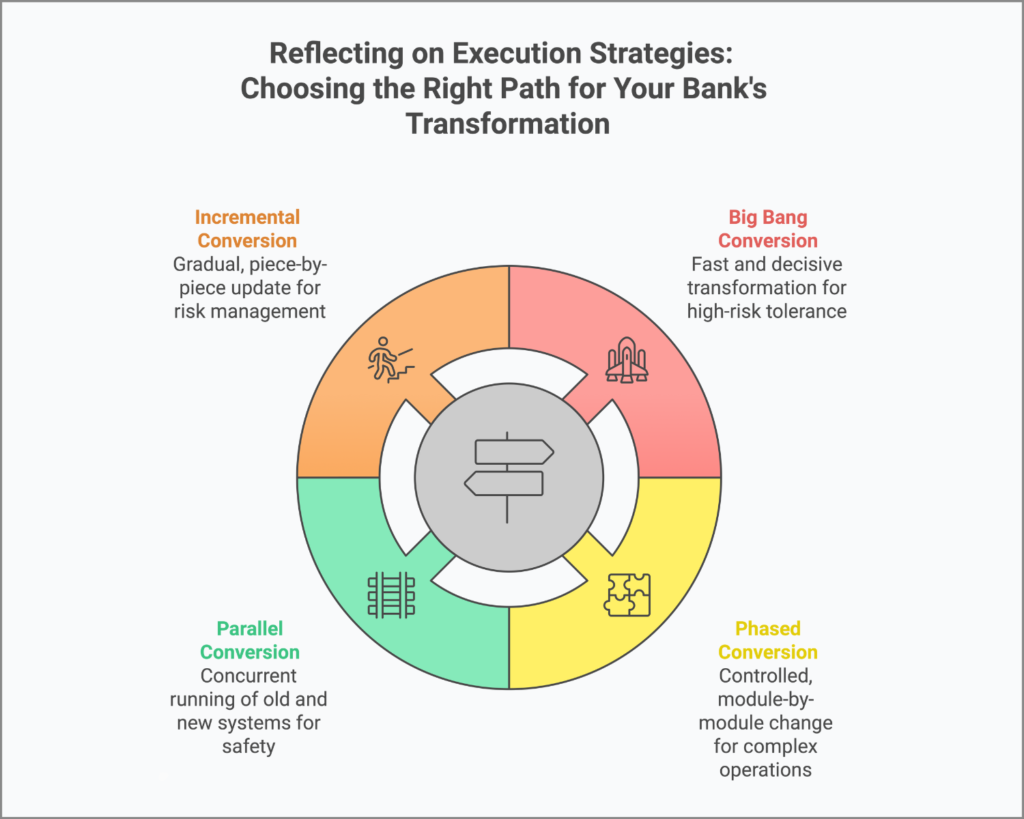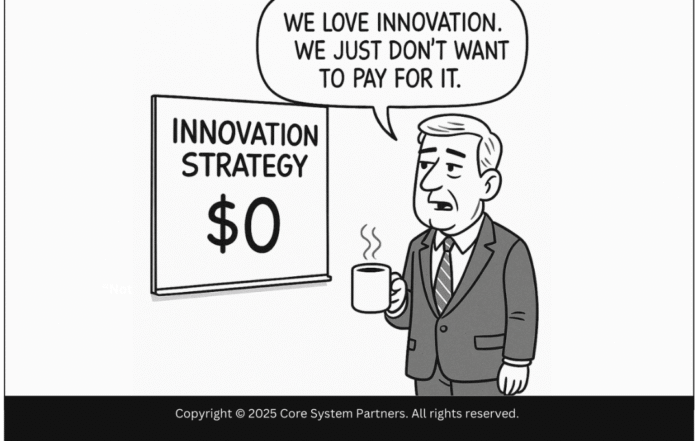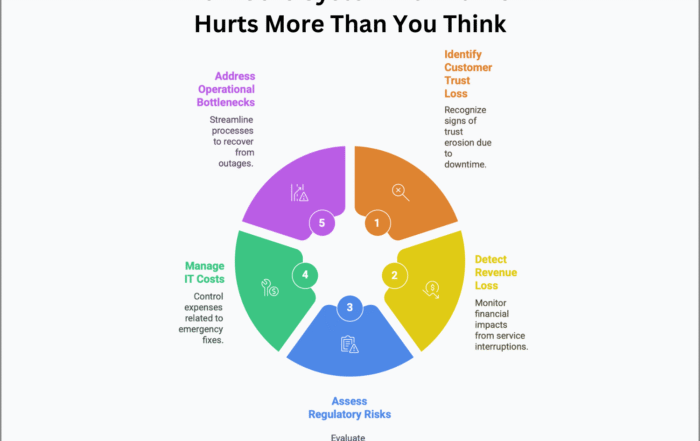
Aligning core banking transformation strategies with your bank’s goals, risk tolerance, and resources for a successful and tailored approach.
Ever find yourself at a crossroads, uncertain of which path to take?
Many feel this way when facing a core banking transformation. Throughout this series, we’ve delved into various strategies, such as Big Bang, Phased, Parallel, and Incremental Conversions, each with distinct advantages and challenges. Now, it’s time to step back and evaluate these options through the lens of your bank’s specific needs, risk appetite, and vision for the future.
The Critical Role of Strategic Alignment
Choosing the proper execution strategy is more than picking the most popular or the least expensive option. It’s about aligning your choice with your bank’s operational realities and strategic goals. Whether it’s the swift and comprehensive approach of the Big Bang or the meticulous and gradual pace of Incremental Conversion, the best strategy for your bank will depend on several nuanced factors.
Critical Considerations for Strategy Selection
Each execution strategy we’ve explored serves different needs:
- Big Bang Conversion is fast and decisive, suitable for banks with a high tolerance for risk and a need for rapid transformation.
- Phased Conversion offers a controlled environment for managing changes module by module, which is ideal for banks with complex operations.
- Parallel Conversion provides a safety net by running old and new systems concurrently, perfect for banks that cannot afford downtime.
- Incremental Conversion prioritizes risk management by updating systems piece by piece, which is great for banks that need to maintain absolute operational continuity.
To determine the best fit, consider:
- Risk Tolerance: How much disruption can your bank handle at once?
- Operational Needs: Does your bank operate globally with multiple integrated systems that require careful synchronization?
- Resource Availability: Do you have the staff, technology, and budget to manage the chosen strategy effectively?
Phased Approach vs. Incremental Approach: Understanding the Distinctions
The Phased Approach and Incremental Approach differ in both scope and execution focus. The Phased Approach divides the transformation into large, distinct stages, each dedicated to specific modules or business areas, such as updating a particular department or region before moving to the next. In contrast, the Incremental Approach emphasizes small, progressive improvements applied across the entire system over time. This means making targeted updates in smaller pieces to ensure steady progress without overwhelming the organization. The choice between these strategies depends on factors like project complexity, resource availability, and the organization’s appetite for change and flexibility. While the Phased Approach is beneficial for managing change in large, clearly defined chunks, the Incremental Approach provides more adaptability, enabling adjustments based on ongoing learnings and outcomes.
Why Flexibility in Strategy Matters
Banking transformations are not static; they evolve as the project progresses. Unforeseen challenges such as regulatory changes, shifting customer needs, or technological advancements can impact your strategy. It’s crucial to maintain flexibility to adapt your approach as needed, ensuring that your plan remains relevant and practical throughout the transformation process.
Best Practices for Strategic Decision-Making
- Comprehensive Evaluation: Comprehensively assess each strategy’s potential impact on your operations. Use scenarios and simulations to forecast outcomes.
- Stakeholder Involvement: Include feedback from all levels of your organization to understand the potential impacts of each strategy.
- Continuous Review: Regularly revisit and assess the strategy’s effectiveness during the implementation. Be ready to pivot or adjust to new information or outcomes.
Balancing the Scales: Speed vs. Security
While some banks prioritize quick transformations to outpace competitors, others value meticulous progression that secures every step. Here’s how you can balance these needs:
- Integrate Flexibility: Start with a pilot or phased approach to gauge the transformation’s impact before fully committing.
- Leverage Technology: Utilize advanced analytics and simulation tools to predict outcomes and plan contingencies.
Moving Forward
As we wrap up our series on core banking transformation strategies, remember that the right path is unique to your bank’s circumstances. Reflecting on each strategy’s merits and aligning them with your goals and capabilities will guide you to a successful transformation. Think before you execute.
Ready to Explore More?
If you’re interested in learning more about phased conversions and other transformation strategies, head over to our Execution Strategies Hub for comprehensive insights. Don’t forget to check out our Main Infographic for a visual breakdown of each approach. You can also visit our Conversion Strategies Hub to get a complete overview of all available paths for your core banking transformation. Equip yourself with the knowledge to make the best decision for your bank’s future.
#CoreBankingTransformation #ExecutionStrategy




